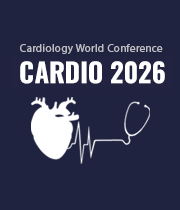Title : Assessment of strain imaging in the prediction of early Cancer Therapy-Related Cardiac Dysfunction (CTRCD) troponin and its correlation with serum biomaker (TROPONIN-I)
Abstract:
Introduction: Cancer therapy-related cardiac dysfunction (CTRCD) is one of the side effects experienced by nearly one-tenth of cancer survivors. LVEF and GLS have been proposed as a marker to predict CTRCD. Recent studies also suggest assessment of cardiac biomarkers including troponin for an early detection of CTRCD, however, how early the strain imaging should be used to evaluate CTRCD post chemotherapy is still under investigation.
Methodology: In a prospective observational study during the period of March 2019 to April 2020, 100 cancer patients on anthracycline and non-anthracycline therapy for different cancers were selected. Echocardiographic parameters such as LV function, GLS, GCS,and troponin I assessment in blood at prior to the initiation of the treatment and at one week after the initiation of the chemotherapeutic treatment was performed. In our study we have taken reference range below -18 for GLS and -22 for GCS as significantly decreased strain. Positive troponin was defined as above the upper reference limit during the sample testing.
Results: Out of 100 patients, 22 developed CTRCD. Post chemotherapeutic treatment, patients who developed CTRCD had reduced GLS, reduced LVEF and significantly higher troponin I versus patients who did not develop CTRCD. In CTRCD patients, GLS was strongly associated with EF(χ2=25.78, p < 0.001). In addition, elevated troponin had significant association with reduced GLS (χ2=78.95, p < 0.001) and reduced EF(χ2=31.31, p < 0.001).
Conclusion: In a mixed cancer population, the increase in troponin I was associated with CTRCD. The study implies to perform early strain imaging within one week of chemotherapeutic treatment to predict CTRCD. Decline in strain (GLS) was significantly correlated with elevated troponin I.
Keywords: Cancer, CTRCD, GLS, LVEF, troponin
Audience Take Away Notes
- The purpose of this study was to evaluate the effectiveness of echocardiography in the detection of CTRCD, its relationship with troponin I.
- To assess the predictive value of strain imaging in CTRCD within one week of the chemotherapy treatment.
- In our study we found out early sub clinical cardiac dysfunction using Strain imaging and we correlated it with Troponin I.
- All the guidelines tell us to do Echocardiography at time interval of 4 weeks after chemotherapy, but in our study we found out CTRCD using GLS as early as 1 week.
- Early detection of CTRCD leads to diagnosis of subclinical cardiac dysfunction which leads to better risk stratification of patients for chemotherapy, and treatment leads to better quality of life.
- However, larger prospective studies with one type of cancer population are needed to strengthen the finding of this study.



